Atlantis
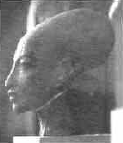 Our Rockefeller textbooks tell us that nobody in the ancient world had ever crossed the Atlantic before Columbus.
Our Rockefeller textbooks tell us that nobody in the ancient world had ever crossed the Atlantic before Columbus.
 Our Rockefeller textbooks tell us that nobody in the ancient world had ever crossed the Atlantic before Columbus.
Our Rockefeller textbooks tell us that nobody in the ancient world had ever crossed the Atlantic before Columbus.
But the voyage of the
Mayflower only took 60 days. Are we honestly to believe that no one had
ever previously taken the 60 day trip in all of human history? The great
civilizations of ancient Egypt, Babylon, Sumer, Greece, Rome, and the
seafaring Phoenicians never wondered what was out West past 59 days
sailing?
If we accept this improbability, we have to accept many more along with it, because the native American cultures of the “New World” and the Eurasian cultures of the “Old World” were already far too similar to have naturally evolved separately.
If we accept this improbability, we have to accept many more along with it, because the native American cultures of the “New World” and the Eurasian cultures of the “Old World” were already far too similar to have naturally evolved separately.

For instance, compare
the Peruvians and Egyptians. The number of complex comparisons between
the two peoples far surpasses serendipity. Both cultures believed in an
immaterial soul which reincarnates through multiple physical existences.
They both worshipped the
Sun, Moon, and Stars, and held amazing astronomical knowledge, much of
which has just recently been rediscovered. Both peoples built amazing
stone pyramids, often containing boulders too heavy for modern cranes to
lift, quarried from miles away. Both cultures embalmed/mummified their
dead. Peruvian and Egyptian royalty both wrapped children’s heads in the
practice of “skull elongation” (like trepanning) to attain higher
consciousness.
They both divided the
year into twelve months. Both peoples had a women’s order of vestal
virgins vowed to celibacy, and violating their vows was punished on both
continents by their being buried alive. Both cultures offered animal
sacrifices and divined the future by examining the animal’s entrails.
They both built huge arches and strewed the road with flowers for
returning home triumphant warriors/heroes. At the beginning of each
agricultural season during a big celebration, the Kings placed their
hands to the plough and ploughed the first furrow.
Are we to believe such incredibly specific practices developed completely independent of one another?
“When the Spanish missionaries first set foot upon the soil of America, in the fifteenth century, they were amazed to find the Cross was as devoutly worshipped by the red Indians as by themselves.”Ignatius Donnelly, “Atlantis: The Antediluvian World”
Ancient symbols like the
cross and the swastika already existed in the Americas long before the
Europeans came. Egyptian symbols like the “Akeru” back to back lion gods
hieroglyph are found in Olmec temples from ancient Mexico.
We have also found Mayan art and glyphs in Egypt.
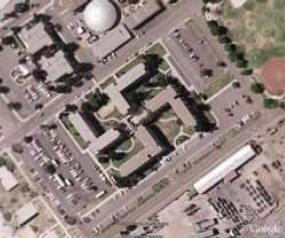
Modern Mayans and tribal
Egyptians both recognize the languages found in their countries as that
of their ancestors and both can read much of it. We’ve discovered
artwork 23000 years old clearly depicting negroes and caucasians in
Central America. The establishment remains silent on all these issues.
The similarities between Old World European and American peoples are vast and difficult to accept as mere coincidence.
The similarities between Old World European and American peoples are vast and difficult to accept as mere coincidence.
The use of cement,
bricks, arches and advanced masonry/architecture is found on both sides
of the Atlantic, as well as roads, stone and suspension bridges;
Metallurgy, ore mining of copper, tin, bronze, gold, silver, and iron;
Sculpture, painting, engraving, agriculture, navigation, large sailing
vessels, pottery, glasswork, and music; both Old and New Worlders
fashioned the same weapons like bows and arrows, spears, swords,
battleaxes, darts and slings; baptism, confession, penance all long
existed on both continents.
“If we find on both sides of the Atlantic precisely the same arts, sciences, religious beliefs, habits, customs, and traditions, it is absurd to say that the peoples of the two continents arrived separately, by precisely the same steps, at precisely the same ends. When we consider theresemblance of the civilizations of the Mediterranean nations to one another, no man is silly enough to pretend that Rome, Greece, Egypt, Assyria, Phoenicia, each spontaneously and separately invented the arts, sciences, habits, and opinions in which they agreed; but we proceed to trace out the thread of descent or connection from one to another.
Why should a rule of interpretation prevail, as between the two sides of the Atlantic, different from that which holds good as to the two sides of the Mediterranean Sea? If, in the one case, similarity of origin has unquestionably produced similarity of arts, customs, and condition, why, in the other, should not similarity of arts, customs, and condition prove similarity of origin? Is there any instance in the world of two peoples, without knowledge of or intercourse with each other, happening upon the same invention, whether that invention be an arrowhead or a steam-engine?If it required of mankind a lapse of at least six thousand years before it began anew the work of invention, and took up the thread of original thought where Atlantis dropped it, what probability is there of three or four separate nations all advancing at the same speed to precisely the same arts and opinions? The proposition is untenable. If, then, we prove that, on both sides of the Atlantic, have descended one from the other, or have radiated from some common source.”Ignatius Donnelly, “Atlantis: The Antediluvian World”
Stubborn Egyptologists/Anthropologists and our Rockefeller textbooks also
claim that the ancient Egyptian, Sumerian, and Babylonian cultures all
somehow started at the height of their civilization and rapidly devolved
as their empires fell.
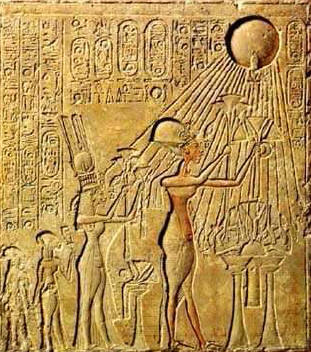
This is standard
accepted “fact” but how is it possible that such advanced cultures just
magically appeared at the beginning of recorded history?
“The region of Mesopotamia (Sumeria), which seems to have suddenly appeared out of nowhere (according to Academia), had a high knowledge of astronomy, architecture, a pantheon of gods, agriculture, gourmet foods, and courts. It is considered to be the cradle of civilization. Mesopotamia, in the north, encompassed the rivers Tigris and Euphrates, which flowed from the Garden of Eden, in the Genesis stories.The places known as Atlantis, Dilmun, and Lemuria are mentioned in the records of Sumeria. This is an obvious indication that these societies or cities predated the Sumerian era. Therefore, the Mesopotamian civilization did not suddenly appear out of nowhere. It was more likely a relocated ancient ‘Lost Civilization’”James Arthur, “Mushrooms and Mankind” (37)
“One of the great mysteries that Egyptologists can never explain is this devolution, this retrograde. You look at the old kingdom, the pyramids, the type of hieroglyphs, the type of jewelry, the type of art produced, and then as it goes forward to the middle kingdom it devolves, it’s less advanced to the new kingdom when they didn’t even build in granite or limestone anymore but in sandstone a much softer stone, easier to work with.”Egyptologist Stephen Mehler, “Egypt and the Ancients.” Coast 2 Coast interview, August, 2004
Are we honestly to
believe that advanced mathematics, medicine, astronomy, architecture,
art, writing, and a complex spirituality were already fully developed
from the very beginning of human civilization?
“How does a complex civilization spring full-blown into being? Look at a 1905 automobile and compare it to a modern one. There is no mistaking the process of ‘development.’ But in Egypt there are no parallels. Everything is right there at the start.”John Anthony West, Egyptologist
“The ancient civilization of the land we call Egypt has been pronounced by archaeologists as flawless of its type from the very first. It reveals none of the painful steps from primeval beginnings passing through the Paleolithic, Neolithic, and Bronze Age, to that of Iron. It apparently burst upon the scene into exotic radiance, its perfected civilization accordingly having been described as a miracle. Science cannot admit any such miracle and another explanation must be forthcoming.”Comyns Beaumont
“What we call ‘Egypt’ lasted longer than the later Hellenic, Roman, Byzantine, Medieval, Renaissance, Enlightenment, Industrial, and modern ages put together and multiplied by three. The manipulators of history, therefore, purposely concentrate our attention on the latter days, in order to prevent us delving back into Egypt's past. They do so, understandably, for they have everything to lose once humankind becomes reintroduced to the archive of knowledge and wisdom that was common to our ancestors.”Michael Tsarion, “Astrotheology and Sidereal Mythology”
“Why did the Sumerians spend thousands of man-years of effort to build and maintain hundreds of temples and ziggurats to their gods? The official explanation is that they invented their deities as an imaginative psychological response to a hostile, incomprehensible environment. The Sumerian beliefs are thus dismissed as a classic example of mankind’s need for religion. However, such facile solutions leave unexplained the origin of the Sumerians’ sophisticated scientific knowledge. Inventing gods is one thing, but inventing the technology to measure the movements of the planets and stars is another thing entirely!”Alan F. Alford, “Gods of the New Millennium – The Shattering Truth of Human Origins” 64
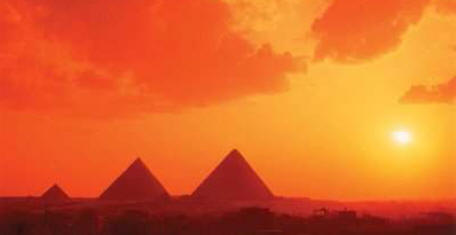
The Sumerians already
knew of all the planets in the solar system and their relative sizes and
distances from one another. They also built massive pyramids and
ziggurats just like every other advanced ancient culture.
Today there are hundreds of pyramids still standing all over the world from India to Peru.
Cultures separated by
the Atlantic, who supposedly never discovered each other’s existence,
built these giant triangular structures, aligned them to cardinal
directions, encoded within them sacred geometry/math, and used them as a
sepulture.
“As Keel says in Disneyland of the Gods: We know that pyramid building was once a universal practice throughout the world. Over six thousand years ago unknown peoples were assembling great pyramids in Mexico. Gigantic manmade mounds were constructed in China, Great Britain, North America, and on remote Pacific islands while the Egyptians were still living in mud huts along the Nile. During World War II pilots flying ‘thehump’ reported seeing one or more massive pyramids standing silently in isolated Himalaya valleys.
Of the ubiquitousness and similarity of pyramids, David Hatcher Childress states: Mayan pyramids are found from Central America to as far away as the Indonesian island of Java. The pyramid of Sukuh, on the slopes of Mount Lawu near Surakarta in central Java is an amazing temple with stone stelae and a step pyramid that would match any in the jungles of Central America. The pyramid is in fact virtually identical to the pyramids found at the ancient Mayan site at Uaxactun, near Tikal.In speaking of the global civilization, Keel elucidates the weaknesses of the current archaeological paradigm: All these things seem to be interrelated, as if they were once part of some great civilization—a common culture that spread throughout the world and then died …We have a reasonably complete history of the past two thousand years, and a half-baked archaeological reconstruction of the past five thousand years. But there are so many gaps in our knowledge that most the popular archaeological theories really have very little merit. Indeed, we can’t even be sure that the Egyptians built the Great Pyramid …In fact, the Great Pyramid is admittedly much more ancient than the Egyptians of history, as Hotema relates: When the most ancient Egyptians first saw the mysterious Sphinx and the great Pyramid of Gizeh, only their tops projected above the windblown sand of the desert. They knew no more about the purpose of these structures, their builders, or when they were built, than we do”Acharya S., “The Christ Conspiracy” (279)
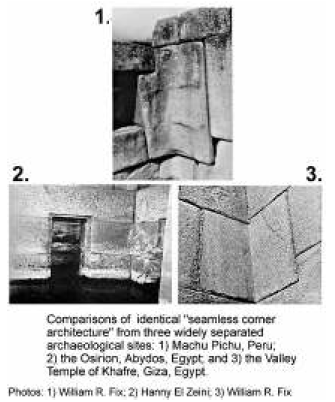
The Great Pyramids at Giza,
even by today’s standards, are absolute miracles in architecture,
masonry/construction, mathematics, and astronomy. The dimensions of the
pyramids are extremely accurate and the site was leveled to within a
fraction of an inch over the entire base.
This is comparable to the accuracy possible with modern construction/surveying methods and laser leveling.
“Beneath the now removed outer layer, the Pyramid’s construction consists of approximately 2,500,000 dressed stones, mostly yellow limestone, but with harder granite for certain interior features. The total mass of the Great Pyramid is estimated at around 90 million cubic feet, which would weigh between 67 million tons. To put this into proper perspective, the highest cathedral nave in Europe would fit three times into its height, and its mass exceeds that of all the cathedrals, churches and chapels built in England since the beginning of Christianity!The Great Pyramid is often cited as the largest building on Earth, with twice the volume and thirty times the mass of New York’s famous Empire State Building. The Pyramid rests on an artificially leveled platform, which is less than 22 inches thick, yet is still almost perfectly level, with errors of less than an inch across its entire area, despite supporting such an enormous weight for thousands of years. The base of the Pyramid is set out perfectly square no mean feat of engineering in itself.”Alan F. Alford, “Gods of the New Millennium – The Shattering Truth of Human Origins” (41)
Up until the last
millennium the pyramids were covered completely with smooth polished
limestone casing blocks. In other words, the pyramids were not an
irregular looking series of steps with a missing capstone like they are
now.
They were covered with
115,000 10ton casing sheets of polished limestone fitted so perfectly
that a razor’s edge couldn’t get between casings, less than 1/50th of an
inch.
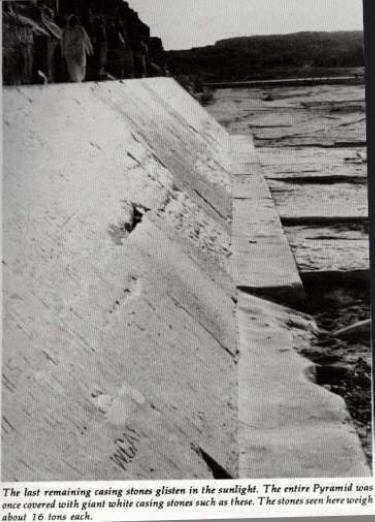
The Egyptians wrote how
it reflected the sun like a mirror on all sides. Today there are still a
few polished casings leftover at the base of one side.
“Our first example of twentieth century engineering in the Giza pyramids is the six sided limestone casing blocks, which were polished and precision, carved to fit perfectly with each other and the core stones, with joints measuring less than one fiftieth of an inch. As if this was not incredible enough, all of these stones were found to be joined together with an extremely fine but strong cement, which had been applied evenly on semi vertical faces across a surface expanse covering 21 acres on the Great pyramid alone! …The second example is the internal passages of the Great Pyramid. These passages have been measured countless times and found to be perfectly straight, with a deviation, in the case of the Descending Passage, of less than one fiftieth of an inch along its masonry part. Over a length of 150 feet that is incredible. If one includes the further 200 feet of passage bored through the solid rock, the error is less than one quarter of an inch. Now this is engineering of the highest precision, comparable with twentieth century technology, but supposedly achieved 4,500 years ago: Our third example is the machining of granite within the pyramids.One of the first archaeologists to carry out a thorough survey of the Pyramid was Petrie, who was particularly struck by the granite coffer in the King’s Chamber. The precision with which the coffer had been carved out of a single block of extremely hard granite struck him as quite remarkable. Petrie estimated that diamond tipped drills would need to have been applied with a pressure of two tons, in order to hollow out the granite box.It was not a serious suggestion as to the method actually used. but simply his way of expressing the impossibility of creating that artifact using nineteenth century technology. It is still a difficult challenge, even with twentieth century technology. And yet we are supposed to believe that Khufu achieved this at a time when the Egyptians possessed only the most basic copper hand tools.”Alan F. Alford, “Gods of the New Millennium – The Shattering Truth of Human Origins” (434)
Under the pyramids are
large tunnels hundreds of meters deep drilled into limestone bedrock
with almost perfect 90 degree angles.
This kind of drilling
technology has only existed (in our current paradigm) for under a
century, so how were they drilling, chiseling and lifting all these
megalithic structures? In a famous meeting with a panel of
Egyptologists, author of “Giza Power Plant” Christopher Dunn brought a
slab of granite, a hammer and a copper chisel and asked for a
demonstration of how Egyptians were supposed to have chiseled out
thousand ton granite obelisks using simple hand tools.
After a few whacks at it, the copper chisel had a deep indent and not a chip of granite was displaced.
“Chris Dunn found that many artifacts bore the same marks as conventional twentieth century machining methods sawing, lathe and milling practices He was particularly interested, however, in the evidence of a modern processing technique known as trepanning.This process is used to excavate a hollow in a block of hard stone by first drilling, and then breaking out, the remaining “core” Petrie had studied both the hollows and the cores, and been astonished to find spiral grooves on the core which indicated a drill feed rate of 0.100 inch per revolution of the drill. This initially seemed to be impossible.In 1983, Dunn had ascertained that industrial diamond drills could cut granite with a drill rotation speed of 900 revolutions per minute and a feed rate of 0.0002 inch per revolution. What these technicalities actually mean is that the ancient Egyptians were cutting their granite with a feed rate 500 times greater than 1983 technology!”Alan F. Alford, “Gods of the New Millennium – The Shattering Truth of Human Origins” (44)“On the granite core the spiral of the cut sinks 1 inch in the circumference of 6 inches, a rate of ploughing out which is astonishing … These rapid spiral grooves cannot be ascribed to anything but the descent of the drill into the granite under enormous pressure.”W.M. Flinders Petrie, “The Pyramids and Temples at Gizeh”
“Wasn’t it peculiar that at the supposed dawn of human civilization, more than 4500 years ago, the ancient Egyptians had acquired what sounded like industrialage drills packing a ton or more of punch and capable of slicking through hard stones like hot knives through butter?”Graham Hancock, “Fingerprints of the Gods”
“In the first and second pyramids at Giza there are granite portcullises in the lower passages which still baffle experts today. Firstly their complex designs suggest a use much more advanced than deterring robbers (the Egyptologist explanation). It would take about 50 men to lift the portcullis slabs into place, yet the narrow corridors they’re positioned into could have only been occupied by a few men at a time.”W.M. Flinders Petrie, “The Pyramids and Temples at Gizeh,” (36)
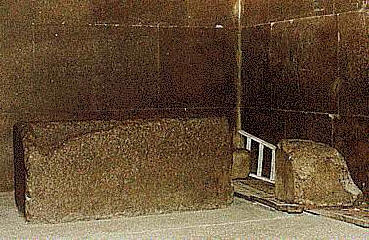 The
pyramids also encode high mathematics supposedly unknown to the simple
ancient Egyptians. To begin with the pyramids are located precisely on
the 30th degree latitude and aligned to within 3 arc minutes of true
north.
The
pyramids also encode high mathematics supposedly unknown to the simple
ancient Egyptians. To begin with the pyramids are located precisely on
the 30th degree latitude and aligned to within 3 arc minutes of true
north.
These are beyond
coincidence so it can be assumed that they could very accurately measure
both latitude and longitude. The ratio of the great pyramid’s height to
its base perimeter is exactly Pi (3.14). The “Kings Chamber” and other
rooms are perfect “golden rectangles” expressing the mystical number Phi
1.618.
The ratio between
successive numbers in the Fibonacci sequence increasingly approach Phi
as you go on from 0,1,1,2,3,5,8,13,21,34… the resulting graph is known
as the fractal “golden spiral” and looks like a conch shell.
Establishment Egyptologists say these mathematical considerations are
all coincidence maintaining that ancient Egyptians didn’t possess these
concepts.
But the reality is, the ancient Egyptians did possess higher math and they purposely encoded it into their construction.
“Some routine mathematical games were built into the dimensions of the sarcophagus. For example, it had an internal volume of 1166.4 liters and an external volume of exactly twice that, 2332.8 liters. Such a precise coincidence could not have been arrived at accidentally: the walls of the coffer had been cut to machine-age tolerances by craftsmen of enormous skill and experience.”Graham Hancock, “Fingerprints of the Gods”
In the Kings Chamber the floor diagonal is precisely twice the room’s height. W.M. Flinders Petrie says they managed to place the Kings Chamber perfectly,
“where the vertical section of the Pyramid was halved, where the area of the horizontal section was half that of the base, where the diagonal from corner to corner was equal to the length of the base, and where the width of the face was equal to half the diagonal of the base.”
Do you suppose these mathematics were accidental?
Egyptologists say that the Giza pyramids were built for three pharaohs over the course of a hundred years. There are over 2.5 million stones, so if you built 24 hours a day for 100 years that means fitting one (average 3.5 ton) stone into place every 8.5 minutes. Using current technology, multiple cranes and work crews, we still couldn’t make that kind of time, nor could we match the craftsmanship.
Six million tons of stone, underground tunnels, chambers, corridors, 45/90 degree shafts, pi and phi ratios, golden rectangles and other mathematical inclusions, perfect cardinal alignments, right angles, astrological considerations and flawless masonry. How did ancient man the whole world over build these huge magnificent pyramids? They stacked stones so heavy, many of which cannot be lifted into place with the technology and machinery available today.
Egyptologists say that the Giza pyramids were built for three pharaohs over the course of a hundred years. There are over 2.5 million stones, so if you built 24 hours a day for 100 years that means fitting one (average 3.5 ton) stone into place every 8.5 minutes. Using current technology, multiple cranes and work crews, we still couldn’t make that kind of time, nor could we match the craftsmanship.
Six million tons of stone, underground tunnels, chambers, corridors, 45/90 degree shafts, pi and phi ratios, golden rectangles and other mathematical inclusions, perfect cardinal alignments, right angles, astrological considerations and flawless masonry. How did ancient man the whole world over build these huge magnificent pyramids? They stacked stones so heavy, many of which cannot be lifted into place with the technology and machinery available today.
They quarried these stones from miles away and fitted them together so seamlessly that you can’t fit a blade between them.
Also in Egypt tens of thousands of diorite bowls have been found with hieroglyphs engraved.
Diorite is one of the
hardest stones on the planet, harder than iron, yet intricate
inscriptions have been made, not through the use of chisels or scraping
but some unknown ancient technology. Whatever it was, was capable of
etching lines 1/150th of an inch wide, often in sets of parallel lines
separated by a mere 1/30th of an inch. The same kind of workmanship has
been found in vases, urns, and other pottery unearthed at the Pyramid of Zoser.
Graham Hancock says:
“There was no technology known to have been available to the Ancient Egyptians capable of achieving such results. Nor, for that matter, would any stone-carver today be able to match them, even if he were working with the best tungsten-carbide tools. The implication, therefore, is that an unknown or secret technology had been put to use in Ancient Egypt.”
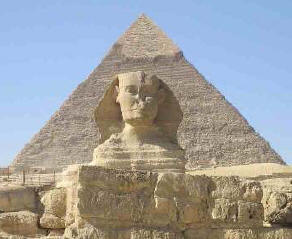 There
are even hieroglyphics in the Temple of Abydos that are clearly of a
helicopter and other advanced vehicles! How do we explain these with the
current paradigm?
There
are even hieroglyphics in the Temple of Abydos that are clearly of a
helicopter and other advanced vehicles! How do we explain these with the
current paradigm?The Sphinx, which Egyptologists say is less than 5,000 years old, is actually at least 10,000 years old based on its weathering alone. Geologists confirm that it has been eroded by massive amounts of water which hasn’t been present in the Sahara for about 10,000 years.
Egyptologists claim this weathering is just wind/sand erosion, but Geologists like Robert Schoch find that hard to swallow.
“In October 1991, Dr Robert Schoch, a geologist at Boston University, presented detailed evidence that the Sphinx was thousands of years older than the commonly accepted date of 2500 BC.’ His conclusion was based on the weathering profile of the limestone rock, out of which the Sphinx had been carved.Visitors to the Sphinx today can clearly see the vertical weathering profile in the limestone trench surrounding the Sphinx. This erosion, according to the science of geology, could only be the result of prolonged rainfall, in contrast to the dry weather experienced in Egypt since 2500 BC. Based on the climatic evidence, Schoch estimated that the Sphinx had to be between 9,000 and 12,000 years old, when the climate in Egypt was much wetter.”Alan F. Alford, “Gods of the New Millennium – The Shattering Truth of Human Origins” (934)
“In fact, although Egypt is often given the honor of being the originator of much human culture, the Egyptians themselves recorded that they were the inheritors of a great civilization that came from elsewhere. Indeed, the Egyptian culture seemingly appeared out of nowhere at a high level of development, as did the SumeroMesopotamian and South American. This fact is explainable if the civilizers were advanced groups coming from elsewhere, from lands that had been destroyed by climatic change, war or other Cataclysm.”Acharya S., “The Christ Conspiracy” (280)
Tlahchiualtepetl,
the “manmade mountain” in Mexico is a ziggurat three times the size of
the great pyramid. The base length of the Pyramid of the Sun at
Teotihuacán is identical in length to the base of the Great Pyramid at
Giza.
Where are those odds?

Teotihuacán means “the place where men become Gods.”
They claim their
pyramids and temples were instruments for transforming the soul after
death, exactly as the Egyptians did. This theme is all over the ancient
world. Ancient Tibetans, the Egyptians and native Americans all had
complex systems, multistage challenges for recently deceased souls to
overcome in the afterlife. Specific stages of the different cultures
afterlife journeys even matchup.
The Mayans and the Egyptians both believed in stellar rebirth where Kings, Pharaohs, and Heroes die and are reborn as stars.
“Archaeologists all over the world have realized that much of prehistory as written in the existing textbooks, is inadequate, some of it quite simply wrong…It has been suggested…that the changes now at work in prehistory herald the shift to a ‘new paradigm,’…made necessary by the collapse of the first paradigm.”Colin Renfrew, “Before Civilization”
The Noah flood myth from the bible was attributed to Zisudra and Atrahasis in Sumerian/Mesopotamian culture three
thousand years earlier. In Aztec mythology only Coxcoxtli and his wife
Xochiquetzal were forewarned of the flood by God and survived by
building a huge boat. They wandered for 104 years before landing in
“Antlan.”
The Mechoacanesecs of Central America say Tezpi built
a large boat, loaded it with animals, grains, seeds, and escaped the
flood with his wife and children. The Maya say “the great mother and
great father” survived and repopulated the world after the flood. The
Chickasaw native Americans say only one family and two animals of every
kind were saved from the flood.
The same basic story is found in almost 600 cultures around the world.
“From almost every culture around the world there emerge more than five hundred strikingly similar legends of a great Flood? These legends allshare a common theme of mankind being swept away with the exception of one man and his family who survived. We in the West generally know the survivor’s name as Noah, but to the Aztecs he was Nene, whilst in the Near East he was AtraHasis, Utnapishtim or Ziusudra.
As for his means of escape, the Bible describes an ‘ark’ or boat, Mesopotamian records describe a submersible vessel, and the Aztec version refers to a hollowed out log. According to the Aztec legend, men were saved by turning into fish. Ancient texts from the Near East speak of the Flood as a major catastrophe not a local or trivial event, but a great time divider.”Alan F. Alford, “Gods of the New Millennium – The Shattering Truth of Human Origins” (74)
There are flood myths from the Inuits of Alaska to the Canarians of Ecuador; From the Tupinamba of Brazil and the Araucnaians of Chile to the Pehuenche and Yamana of Tierra del Fuego; From the Sumerians and early Mesopotamians to the Hopi, Iroquois, and Sioux Indians of North America. Thailand, Laos, Australia, Japan, China, Greece, Egypt, India, North, South and Central America. The story is found all the world over, but the claims are quite difficult to swallow. Is the flood just a story, a myth with metaphorical meaning, or a literal account of global flooding?
“Perhaps the greatest myth being purveyed is that myths are just myths.”Michael Tsarion
In Japan the Yonaguni megalith is
undoubtedly manmade yet it has been underwater since at least 8000 BC.
It is 8 stories high, 500 feet long with internal and external right
angles, steps, rooms, and “the Stage” altar-like area with huge human
faces and headdresses carved into the stone.
In the Gulf of Cambay in
Northwest India are two multiple mile long/wide underwater cities which
taken together are the size of Manhattan.

About 2000 human
fossilized remains have been found in these cities and have all carbon
dated to around 7500 BC. Many underwater ruins have been found off the
coast of Cuba 2,200 feet below sea level. There have been over 200
sunken cities found in the Mediterranean alone. The possibility of a
literal flood is not to be scoffed at.
Perhaps only the more specific elements of the story are metaphorical.
“Plato tells us of an advanced civilization that existed 9000 years before himself when the Atlantic was navigable and traversed by people the world over … One of the most revealing details of Timaeus is its mention of the ‘opposite continent,’ an unmistakable reference to America. Its inclusion proves not only that the ancient Greeks knew what lay on the other side of the Atlantic Ocean 2,000 years before Columbus rediscovered it, but underscores the veracity of Plato’s Atlantis account.”
Frank Joseph, “The Atlantis Encyclopedia” (269)
Plato wrote about
an advanced civilization that flourished in Atlantis around 10,000 BC.
He even made the point that some take Atlantis to be a myth but it is
absolutely true. He even said when the flood occurred figuring
approximately 9600 BC. Atlantean-like legends are on every inhabited
continent and always include advanced beings often revered as gods with
high technology and developed culture.
Nearly 600 cultures
around the world speak about a world wide flood caused by angry gods
that all but wiped out this advanced civilization.
"You do not know that there formerly dwelt in your land the fairest and noblest race of men which ever lived, and that you and your whole city [Athens] are descended from a seed or remnant of them which survived. The power came forth out of the Atlantic Ocean, for in those days the Atlantic was navigable; and there was an island situated in from of the straits which are by you called the Pillars of Hercules: the island was larger than Libya and Asia put together, and was the way to other islands …Now in this island of Atlantis there was a great and wonderful empire which had rule over the whole island, and several others, and over parts of the continent, and furthermore the men of Atlantis had subjected the parts of Libya within the columns of Hercules as far as Egypt and of Europe as far as Tyrrhenia [Italy]."Plato, “Timaeus”
It’s interesting that
King “Atlas” is said to have ruled “Atlantis” an ancient sunken city in
the “Atlantic” Ocean. There is also a Mount Atlas in Morocco and the
etymology of Atlas/Atlantic is indeed from Atlantis.
Strangely enough, however, as the Atlantean scholar Comyns Beaumont wrote,
“The word (Atlantis) possesses no derivation from any known language of the old world either ancient or modern. Yet, among the so-called ‘native races’ of America, it is a living word.”“The Key to World History,” 19
The Toltecs,
Nahuatlacas, and Aztecs of South America and all the races that settled
Mexico traced their ancestors back to a starting point called “Aztlan”
or “Atlan,” in the Atlantic. It was a land they described as “too fair
and beautiful to be left willingly” which was lost under the sea after a
great flood. Aztec temples are called “Teocalli” which interestingly
compares with the Greek “theos” (God) and “kalias” (house/dwelling of).
Europeans first settling
in Delaware and Maryland found a river named by the natives “Potomac,”
which is just like the Greek word “Potomos” meaning “river.” The native
Basques of Western Europe also claim to be descendants from a continent
called “Atlaintika” which sank beneath the waves.
The Basque language itself shares no lingual affinities with any other European language but is very similar to native American languages.

The natives of Mindanao
in the Philippines are the “Atas” who have the same flood myth and claim
descent from light skinned invaders who intermarried with the
aboriginals.
“Look at it! An ‘Atlas’ mountain on the shore of Africa; an ‘Atlan’ town on the shore of America; the ‘Atlantes’ living along the north and west coast of Africa; an Aztec people from Aztlan, in Central America; an ocean rolling between the two worlds called the ‘Atlantic;’ a mythological deity called ‘Atlas’ holding the world on his shoulders; and an immemorial tradition of an island of Atlantis. Can all these things be the result of accident?”Ignatius Donnelly, “Atlantis: The Antediluvian World”
With the Atlantic Ocean
and the Atlas Mountains in Morocco we see the theme of water and
hills/mountains being equated with Atlas – this is repeated world wide.
In Japan, Atago is a hill in the center of Tokyo where gods brought
civilization to Japan.
Atagi are the
Japanese priests protecting wisdom from prehistory. In Tongo, Ata
mountain and memorial are devoted to red-haired, fair-skinned gods who
came long ago and blessed the natives. Italy, comes from Italia, which
comes from Atalya, a word meaning “land of Atlas” Atalya is also the
name of an ancient ceremonial mound in Biarritz.
Across the Atlantic, the Aztecs also venerated a holy mountain by that name. Atalaia is the name of a small Quechua Indian town and Atalya was
a PreIncan city found by archaeologists and confirmed by local history.
In Guatemala where the Mayan civilization thrived, near Lake Atitlan is
a stone tower called Atalaya. The mountains of Indonesian Sumatra are called Atjeh.
The Guanche natives on the Canary Islands call mountains “Ataras” and their Atlas figure was named “Ater.” Tenerite (Guanch) natives call themselves Atinach, which means “people of the sky god.”
Herodotus, Diodorus Siculus and
other classical writers describe the “Atarantes” people who lived on
the Atlantic shores of Morocco. “Atcha” is ancient Egyptian for an
advanced, but sunken city.
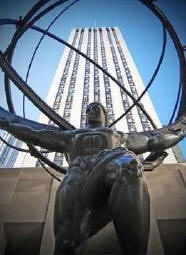
Egyptian gods or heroes
were Atum, Atfih, Athothes, and many other “At” names. Atchafalaya means
“Long River” to the Choctaw Indians whose flood myth syncs. Atea is the
Marquesans ancestral progenitor, like Egypt’s Atum. Atiamuri is the
site of huge megalithic ruins in New Zealand, which contains At and Mu.
Atiu is an extinct volcano in the Cook Islands.
The Pawnee Indian’s, adept at astrology with the usual flood myth had the sky god “Atius.” Nahuatl is the Aztec’s language and almost all their gods names end in “atl.” Their Atlas character is Atlanteotl and Atlantika means “we live by the sea.”
The Pawnee Indian’s, adept at astrology with the usual flood myth had the sky god “Atius.” Nahuatl is the Aztec’s language and almost all their gods names end in “atl.” Their Atlas character is Atlanteotl and Atlantika means “we live by the sea.”
The Taureg natives of
Morocco’s name for water is also Atl. The Tuaregs claim decent from the
“Atlantes” ancient Moroccans written about by Herodotus, Diodorus
Siculus and others. Atla was a giantess Norse god. Atlakvith (meaning
Punishment of Atla) is the name of their written record of their
Atlantean oral history. Atlamal is another of these myths which means
“The story of Atla.” Atla is also an Otomi Indian town in Mexico.
The Otomi have a ritual
dance called the “Acatlaxqui” with 10 dancers to represent the 10 kings
of Atlantis from the ancient ancestry. The Aztec seagod was “Atlahua”
and their great flood was “Atemoztli. Today’s Alca on the Gulf of Uraba
was called Atlan before the Spanish conquest. Atlan is the name of a
Venezuelan village of Paria Indians who say their home country was a
prosperous island in the Atlantic inhabited by wealthy seafarers from
which they escaped the flood.
Autlan was home of the
advanced Tarascans of Michoacan who say they were inheritors of a
drowned island civilization. Atland is the Northern European name given
to Atlantis as shown in the medieval Frisian manuscript, Oera Linda Bok.
Atlanersa was the 5th century BC King of Nubia, whose name meant “Royal
descendant of Atlan.” Atao was a Minoan god thought to be Atlas.
And later in Crete,
Atana was the name of a their language/dialect. Aton was the oldest sun
deity in Egypt and Atonatiuh was the ancient Aztec sun god. Another name
for Egypt’s Sun God was Ra like Rama of the Hindus, Rana of the
Toltecs, Rayam of the Yemen, and the Raymi Peruvian Sun festival. (Frank
Joseph, “The Atlantis Encyclopedia” 2943)
Scholar and renowned linguist Charles Berlitz of Berlitz language schools spoke
32 languages and wrote many books on Atlantis. He came to believe in
Atlantis after his research traced all world languages back to what he
thought must be a single ancient dialect. Many famous people have
believed in the authenticity of Atlantis.
Francis Bacon wrote, “The New Atlantis,” H.G. Wells wrote “Men Like Gods” about Atlantis, and William Blake the poet was a believer. The two best-known prophets in history Nostradamus and Edgar Cayce both
spoke of Atlantis. Ignatius Donnelly was a Minnesota Governor,
Congressman and Senator who wrote extensively about Atlantis.
The most revered and well-known philosopher in history, Plato, wrote about Atlantis specifically saying it was both a literal story and a myth.
“Iamblichos (was) an important fourth-century neo-Platonist philosopher who insisted upon the historical validity of Plato’s Atlantis account, but stressed, as did Plato, its allegorical significance.”Frank Joseph, “The Atlantis Encyclopedia (143)
Silenus told Midas that
there was another continent besides the commonly known ones. He said
there was "a country where gold and silver are so plentiful that they
are esteemed no more than we esteem iron."
St. Clement, in his Epistle to the Corinthians, said there were other worlds beyond the ocean.
Diodorus Siculus said that the Phoenicians discovered,
"a large island in the Atlantic Ocean, beyond the Pillars of Hercules, several days' sail from the coast of Africa. This island abounded in all manner of riches. The soil was exceedingly fertile; the scenery was diversified by rivers, mountains, and forests. It was the custom of the inhabitants to retire during the summer to magnificent country houses, which stood in the midst of beautiful gardens. Fish and game were found in great abundance; the climate was delicious, and the trees bore fruit at all seasons of the year."
The ancient Greek poet, Hesiod, described the world before the “fall” saying,
“Man lived like Gods, without vices or passions, vexation or toil. In happy companionship with divine beings they passed their days in tranquilityand joy, living together in perfect equality, united by mutual confidence and love. The Earth was more beautiful than now and spontaneously yielded an abundant variety of fruits. Human beings and animals spoke the same language and conversed with each other (telepathy). Men were considered mere boys at a hundred years old. They had none of the infirmities of age to trouble them and when they passed to regions of superior life, it was in a gentle slumber.”
“The religion of the Atlanteans, as Plato tells us, was pure and simple; they made no regular sacrifices but fruits and flowers; they worshipped the sun. In Peru a single deity was worshipped, and the sun, his most glorious work, was honored as his representative. Quetzalcoatl, the founder of the Aztecs, condemned all sacrifice but that of fruits and flowers.The first religion of Egypt was pure and simple; its sacrifices were fruits and flowers; temples were erected to the sun, 'Ra', throughout Egypt. In Peru the great festival of the sun was called 'Ra'-mi. The Phoenicians worshipped Baal and Moloch; the one represented the beneficent, and the other the injurious powers of the sun.”Ignatius Donnelly, “Atlantis and the Antediluvian World”
Homer, Plutarch,
and many other ancient writers mention islands situated in the Atlantic
"several thousand stadia from the Pillars of Hercules." Pillars,
obelisks, and towers have all been shown to have Masonic significance.
Hercules performing his twelve labors has been shown to reference the
Sun, the mushroom, and consciousness in general.
So are the pillars of Hercules real or metaphorical? Is Atlantis real or metaphorical? Could it be both?
“The Atlantis story was preserved at the Canary Islands perhaps in far greater detail than even Plato’s account before the imposition of Christianity, which affected Guanche culture like a blight. Perhaps the most revealing of all surviving material connecting the Canary Islanders to Atlantis is found in the Tois Aethiopikes by Marcellus.In 45 A.D., he recorded that ‘the inhabitants of the Atlantic island of Poseidon preserve a tradition handed down to them by their ancestors of the existence of an Atlantic island of immense size of not less than a thousand stadia [about 115 miles], which had really existed in those seas, and which, during a long period of time, governed all the islands of the Atlantic Ocean.’Pliny the Elder seconded Marcellus, writing that the Guanches were in fact the direct descendants of the disaster that sank Atlantis. Proclus reported that they still told the story of Atlantis in his day, circa 410 A.D.”
Frank Joseph, “The Atlantis Encyclopedia” (130)
“Marcellus, in a work on the Ethiopians, speaks of seven islands lying in the Atlantic Ocean probably the Canaries and the inhabitants of these islands, he says, preserve the memory of a much greater island, Atlantis, ‘which had for a long time exercised dominion over the smaller ones.’"Didot Müller, "Fragmenta Historicorum Græcorum," vol. IV (443)
Many aspects of the
Atlantean myth must be literal, but others must be allegorical. The idea
of 1 island ruling over 7 sounds more metaphorical. There are several
islands in the Canaries and to say there are 7 major islands, 8, 9, 20
or just 1 is arbitrary.
Perhaps Atlantis, this one excellent place, had dominion over the seven chakras, energetic islands in the oceans of our bodies.
“The Maya have much in common with the Indians as well. As to the similarities between the Mayan and Hindu religion and language, Hinduism Today says, ‘Chacla in Mayan refers to force centers of the body similar to the chakras of Hinduism. K’ultanlilni in Mayan refers to the power of God within man which is controlled by the breath, similar in meaning to kundalini.Mayan chilambalam refers to a sacred space, as does Tamil Chidambaram. Yok’hah in Maya means ‘on top of truth,’ similar to yoga in Sanskrit.’ The Maya also had the same goddess Maya, mother of the gods and man, as in India. Furthermore, the legendary founder of the Maya was the god Votan or Wotan, a name identical to the god of Teutonic tribes. There are many such correspondences between the Old and New Worlds.”Acharya S., “The Christ Conspiracy” (276)
So the Mayan and Indian
words chakra, kundalini, and yoga share identical sounds and meaning.
The word “Maya” means “Illusion” in both languages as well and refers to
our material existence, which both cultures believe to be illusory.
They believe, as all ancient cultures believed, that we are immaterial
souls having a physical experience.
In Sanskrit, “Atl” means “to support or uphold” as Atlas was said to hold the world on his shoulders.
In Sanskrit, “Atl” means “to support or uphold” as Atlas was said to hold the world on his shoulders.
Alonso de Molina’s 16th century dictionary of the Nahuatl language, “Vocabulario En Lengua Mexicana y Castellana” says that,
"The words Atlas and Atlantic have no satisfactory etymology in any language known to Europe. They are not Greek, and cannot be referred to any known language of the Old World. But in the Nahuatl language we find immediately the radical 'a', 'atl', which signifies water, war, and the top of the head.”
Why the top of the head?
The word “atl” is found in the names of most of their gods, and one of its meanings is “top of the head.”
“The tree sacred to Atlas; its branches, like his arms, supported the heavens. The oak’s association with Atlas implies a primeval tree cult or pillar cult, a memory of it surviving in Kritias, Plato’s Atlantis account, when he described a ceremonial column at the very midpoint of the Temple of Poseidon, itself located at the center of Atlantis. The Atlanteans’ oldest, most hallowed laws were inscribed on its exterior and sacrificial bull’s blood was shed over it by all 10 kings of Atlantis in that civilization’s premiere ritual.”Frank Joseph, “The Atlantis Encyclopedia” (208)
The pineal gland (6th
chakra, the third-eye) lies at the geometrical center point of the
brain. Plato’s account of Atlantis described a “ceremonial column at the
very midpoint of the Temple of Poseidon, itself located at the center
of Atlantis.”
The ceremonial column
(Oak Tree, Tree of Life, Staff of Moses etc.) is the human spine with 33
vertebrae. The actual medical term for the 33rd vertebrae which holds
up the skull is “Atlas,” same as the King of Atlantis.
In Atlantean mythology,
Atlas holds up the world or the heavens and in your body the Atlas
vertebrae holds up your head/mind. In Atlantean mythology, Atlas has 7
daughters who spend all their time guarding and dancing around the Tree
of Life; In your body you have 7 energy centers (chakras) dancing around
your spine.
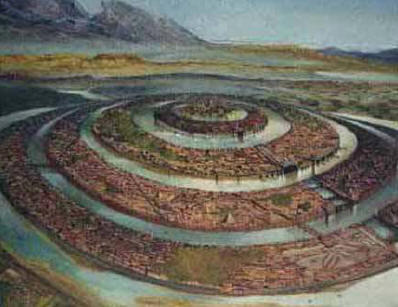
Plato described Atlantis as
being shaped like three concentric circles of land separated by
concentric circles of water. In other words the shape of a bull's-eye.
Why would the center of a target be called a “bull’s-eye” anyway?
The Atlas vertebra holds
up your brain, your “thirdeye” is at the center of your brain, and the
center of Atlantis is a “bull’s-eye.” In fact, your skull, which Atlas
holds up, is shaped just like Atlantis is described. At the center point
is your third eye. The third eye is separated and surrounded completely
by water/fluid. Next is the cerebral cortex, the meat of the brain.
Then around that is a layer of constantly flowing/pumping blood. And
lastly around that is the skull.
Plato said sacrificial
bull’s blood was shed over the exterior of the Temple of Poseidon, which
is also consistent with the blood that flows over the exterior of the
brain.
“Bulls were associated with divine regents in Sumer, Egypt, Assyria, Minoan Crete, Greece, Rome, Iberia, and Ireland. All of these cultures featured traditions of a great deluge from which their ancestors came with all the accoutrements of a high civilization, including, most importantly, matters of kingship. In each people, their king was ritually identified with a sacred bull, because it was important for a leader to identify with the tremendous strength and aggressiveness epitomized by such an animal.In preCeltic Ireland, the new monarch had to undergo a ceremonial bath of bull’s broth, which he then drank from an Atlantean-like golden cup. The Egyptian Hape, better remembered by his Greek name, Apis, was the sacred bull of Memphis. Like the bulls at the Temple of Poseidon, he was allowed to roam free in a courtyard of the temple.”Frank Joseph, “The Atlantis Encyclopedia” (78)
If the Temple of
Poseidon (between your “temples”) is your brain then Atlantis’ bull’s
eye is your third-eye/pineal gland which literally “roams free in the
courtyard of the temple” because it is surrounded by water/fluid.
Bull's eyes also just happen to be red, white and black, the same color as Santa, the Amanita Muscaria, and the flag of Egypt.
“In this West African version of the flood, Obatala is the Yoruba version of the Greco-Atlantean Atlas: Oba denotes kingship, while atala means ‘white.’ Yoruba priests wear only white robes while worshipping him, and images of the god are offered only white food. Among these sacrifices are white kola and goats, recalling the Atlantean goat cults known to the ancient Canary Islanders, off the coast of northwest Africa, and the Iberian Basque.
Obatala’s chief title is ‘King of Whiteness,’ because he is revered as the white skinned ‘Ancient Ruler’ and ‘Father’ of the Yoruba race by a native woman, Oduduwa. Like Atlas, Obatala was a giant in the middle of the sea, and the ‘seven chains’ which signal the end of the Deluge may coincide with the seven Pleiades, associated throughout much of world myth with the Flood’s conclusion.Directly across the Atlantic Ocean, in the west, the Aztec version of Atlantis – Aztlan was referred to as the ‘White Island.’ In the opposite direction, in the east, Hindu traditions in India described ancestral origins from Attala, likewise known as the ‘White Island.’”Frank Joseph, “The Atlantis Encyclopedia” (209)
Is this where we get our
legends of an Ivory Tower on an island? Was it a real tower on a real
island or our ivory spines on the islands of our bodies? Or was it both?
“‘The White Island’ described in the great Indian epic Mahabharata and in the epic poems, the Puranas, as the mountainous homeland of a powerful and highly civilized race located in ‘the Western Sea’ on the other side of the world from India … Atala itself sank in a violent storm.”
Frank Joseph, “The Atlantis Encyclopedia” (33)
“The nations on the west of the Atlantic look to the 'east' for their place of origin; while on the east of the Atlantic they look to the 'west': thus all the lines of tradition converge upon Atlantis. But here is the same testimony that in the Garden of Eden there were four rivers radiating from one parent stream.And these four rivers, as we have seen, we find in the Scandinavian traditions, and in the legends of the Chinese, the Tartars, the Singhalese, the Thibetians, the Buddhists, the Hebrews, and the Brahmans. And not only do we find this tradition of the Garden of Eden in the Old World, but it meets us also among the civilized races of America. The elder Montezuma said to Cortez, "Our fathers dwelt in that happy and prosperous place which they called Aztlan, which means 'whiteness.’”–Ignatius Donnelly, “Atlantis: The Antediluvian World”The Bible stories featuring a garden, tree, serpent, and golden apples are known the world over and they originate from the Atlantean legend. “The history of the old testament is the history of Atlantis.”Comyns Beaumont
“The American Tree of Life The Toltec legends speak of a garden, a tree, a serpent and a woman that was the mother of all mankind. They also speak of a race of giants that were in the world from the earliest times.”Ignatius Donnelly, “Atlantis and the Antediluvian World”
“(The) Tree of Life (is) a mythic allusion to the human spinal column as the bearer of seven major energy centers known as chakras, or spiritual ‘wheels’ in Indian kundalini yoga. The concept originated in Atlantis, with its seven Hesperides, daughters of Atlas, and the golden apples of eternal life they guarded.”Frank Joseph, “The Atlantis Encyclopedia” (272)
"Mythology often appears to be describing body sensations when it speaks of serpents, as well as describing the human spine, which can be symbolized as the tree or twin trees or the serpent or twin serpents. The serpent image connected with the spine has its best-known representation in the Indian Kundalini mythology.Chetwynd (1982) describes body symbolism that is related to the serpent as ‘connected with the spinal column, which joins the physical nature (the genitals) to the spiritual nature (the head).’”Gerry Anne Lenhart, “The Genesis Model”
In other words the
“fall” and the “flood” whether or not they happened physically, likely
happened within an individual or on a spiritual level. And Atlantis,
whether or not was a real island continent heading an advanced global
civilization, likely also referenced the soul, the pineal gland, and
chakra system within the individual.
The most sacred secrets of the Masons and world Royalty pertain to the chakra/energetic system, the amanita muscaria, DMT, and Kundalini yoga’s activation of the crown chakra.
“A new center – presently dormant in the average man or woman – has to be activated and a more powerful stream of psychic energy must rise into the head from the base of the spine to enable the human consciousness to transcend the normal limits. This is the final phase of the present evolutionary impulse in man. The cerebrospinal system of man has to undergo a radical change, enabling consciousness to transcend the limits of the highest intellect. Here reason yields to intuition and revelation appears to guide the steps of humankind.This mechanism, known as Kundalini, is the real cause of all so-called spiritual and psychic phenomena, the biological basis of evolution and development of personality, the secret origin of all esoteric and occult doctrines, the master key to the unsolved mystery of creation, the inexhaustible source of philosophy, art, and science, and the fountainhead of all religious faiths, past, present and future.”Dr. Lee Sanella, “The Kundalini Experience”
“So what is meant by the term Kundalini experience? Kundalini is a Sanskrit word that can be translated as ‘coiled up.’ Kundalini is represented in many Tantrik illustrations as a sleeping serpent, coiled 3 ½ times, at the base of the spinal cord. The popular view of Kundalini is that it is adormant power that lies waiting to be unleashed, by means of various practices. The ‘serpent power,’ once awakened, is coaxed up the central channel of the spine, entering the chakras (psychic energy centers) until it reaches the Crown chakra and the yogi achieves ‘illumination.’”
Phil Hine, “Kundalini, A Personal Approach”
“The caduceus symbol of coiling snakes is thought to be an ancient symbolic representation of Kundalini physiology. The concept of Kundalini comes from yogic philosophy of ancient India and refers to the mothering intelligence behind yogic awakening and spiritual maturation. It might be regarded by yogis as a sort of deity, hence the occasionalcapitalization of the term. Within a western frame of understanding it is often associated with the practice of contemplative or religious practices that might induce an altered state of consciousness, either brought about spontaneously, through a type of yoga, through psychedelic drugs, or through a near-death experience …
According to the yogic tradition Kundalini is curled up in the back part of the root chakra in three and one-half turns around the sacrum. Yogic phenomenology states that kundalini awakening is associated with the appearance of bioenergetic phenomena that are said to be experienced somatically by the yogi. This appearance is also referred to as ‘pranic awakening’.Prana is interpreted as the vital, life sustaining force in the body. Uplifted or intensified life energy is called pranotthana and is supposed to originate from an apparent reservoir of subtle bioenergy at the base of the spine. This energy is also interpreted as a vibrational phenomena that initiates a period, or a process of vibrational spiritual development …Kundalini is mainly associated with Hinduism. However, Kundalini as a spiritual experience is thought to have parallels in many of the mystical and Gnostic traditions of the world's great religions. Many factors point to the universality of the phenomenon. The early Christians might have referred to the concept as 'pneuma', and there are some recent parallels in contemporary Christian Charismatic 'Holy Ghost' phenomena.Religious studies also note parallels in Quakerism, Shakerism, Judaic Shuckling (torso rocking prayer), the swaying zikr and whirling dervish ofIslam, the quivering of the Eastern Orthodox hesychast, the flowing movements of tai chi, the ecstatic shamanic dance, the ntum trance dance of the Bushman, Tibetan Buddhist tummo heat as practiced by Milarepa, and the indically derived Andalusian flamenco (Sovatsky, 1998).
Kundalini practice is centerfold in Japan's Aum Shinrikyo group and Kundaliniyoga is also one of the stages the practitioner is able to achieve.”Crystalinks, “Kundalini” (http://www.crystalinks.com/kundalini.html)
“The ancient yogis and sages who developed Kundalini Yoga had a deep respect for the Creator of this human body. They knew, in their profound devotion and worship, that so perfect a Creator could only have created perfection in design, function and potential. Based on this respect, they sought knowledge of the totality of the human being. Theyresearched the human ability to maintain good health, increase vitality, open consciousness and expand the experience of the excellence of human life.
Their research gave them a great understanding of the nervous system, glandular system, organ system, energy system, and brain. They learned how blood, nerves, muscles, organds, and glands all work together. They investigated the seen and the unseen, and the interrelationships between the physical and the subtle. From this research they developed Kundalini Yoga. Kundalini Yoga is a highly evolved technology based on a through understanding of the ecology of the human body, how the breath affects the thinking, how the angle of a finger affects the pituitary gland.This technology works with the systems of the human body using the body’s own means. Hand position, breath, posture, sound, and motion are employed in various ways to create the optimum balance among all the body’s components … until recent times these techniques had been secret, taught only to a chosen few.”Harijot Kaur Khalsa, “Kundalini Yoga, Physical Wisdom”
“Contemporary spiritual literature often notes that the chakras, as described in the esoteric kundalini documents, bear a strong similarity in location and number to the major endocrine glands, as well as nerve bundles called ganglions. One speculation is thatthe traditional practices have formalized a method for stimulating the endocrine glands to work in a different mode which has a more direct effect on consciousness, perhaps ultimately by stimulating the release of DMT by the pineal gland, which may be analogous to the 'pineal chakra'.
The late Itzhak Bentov studied Kundalini from an engineering perspective. According to Bentov (1990), the 7.5 Hz oscillation of the heart muscle rhythm induces mechanical Hz frequencies in the brain, that in turn create a stimulus equivalent of a current loop. The nerve endings in that loop correspond to the route through which the Kundalini ‘rises.’ This current polarizes the brain part through which it flows in a homogenous way, effectively releasing tremendous amounts of stress from the body.The body then becomes an effective antenna for the 7.5 Hz frequency, which is one of the resonant frequencies of the ionosphere. In layman's terms, you then pick up information from the air. This might account for repeated descriptions of heightened senses as a result of rising Kundalini, e.g. as described by Yogananda:‘The whole vicinity lay bare before me. My ordinary frontal vision was now changed to a vast spherical sight, simultaneously all-perceptive.’”
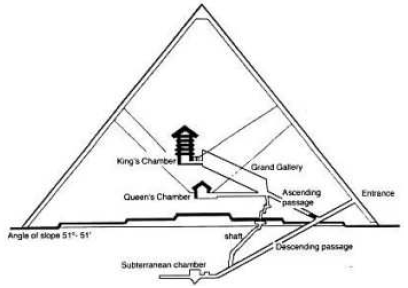
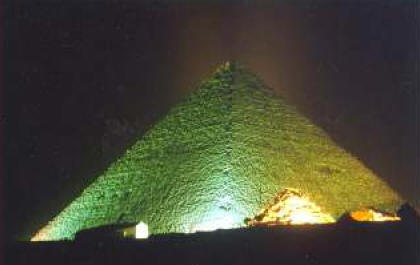



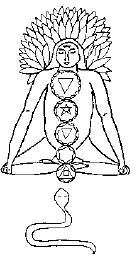
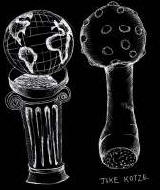

No comments:
Post a Comment